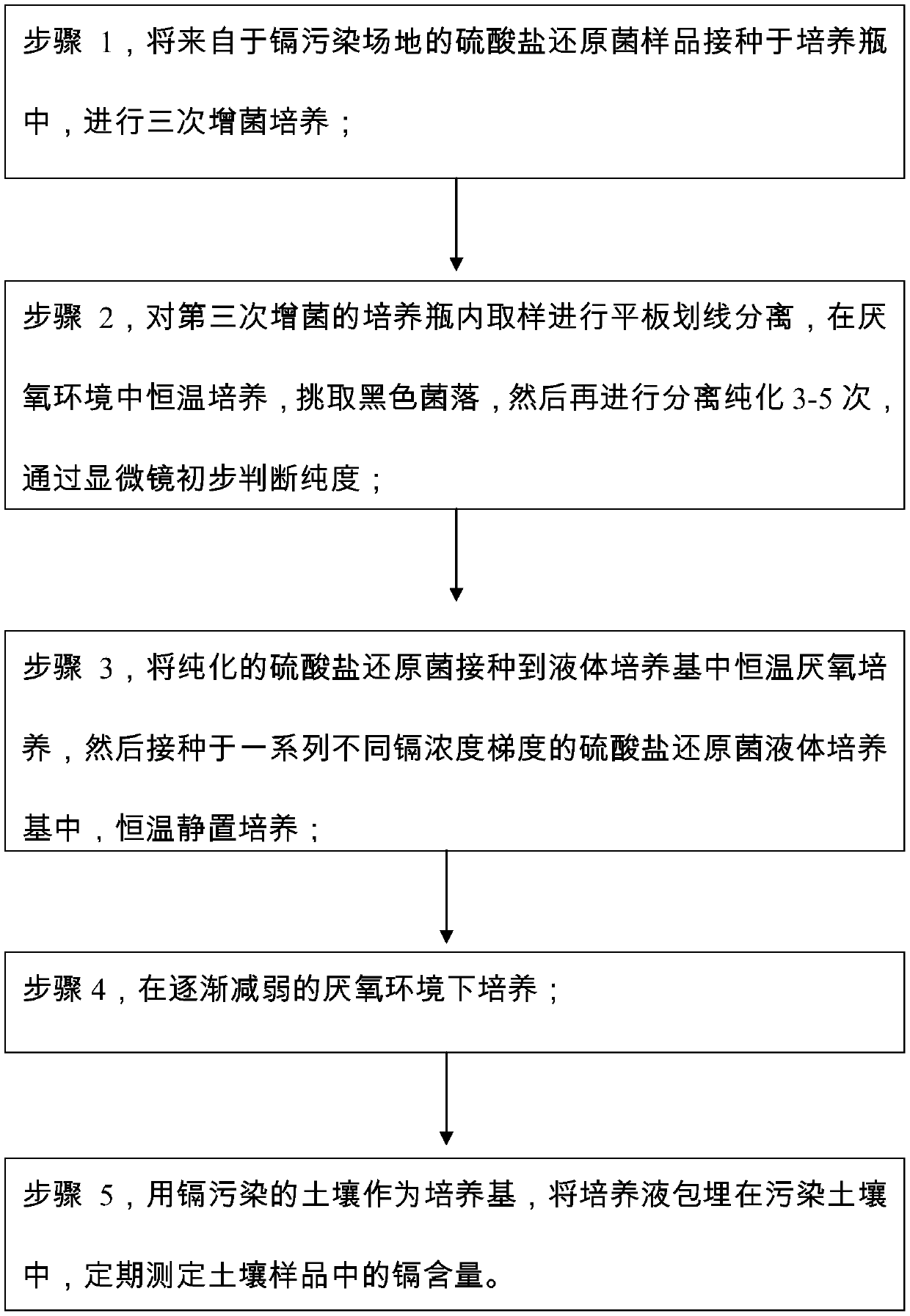Method for separating high-cadmium-resistance sulfate reducing bacteria
A sulfate, cadmium-resistant technology, applied in the methods of using microorganisms, separating microorganisms, and restoring polluted soils, can solve the problems of other dominant bacteria occupying places, difficult to achieve, and sulfate-reducing bacteria cannot grow. achieve a highly tolerated effect
- Summary
- Abstract
- Description
- Claims
- Application Information
AI Technical Summary
Problems solved by technology
Method used
Image
Examples
Embodiment Construction
[0027] The present application will be described in further detail below in conjunction with the accompanying drawings, but it is not intended to limit the present application.
[0028] Such as figure 1 Shown, at first, the sample of the present invention comes from the cadmium-contaminated site. The first step in the isolation process is to activate the sample, ie enrichment. The enrichment medium used in this step of the present invention is a special medium for sulfate-reducing bacteria. The bacteria enrichment is divided into three times. The first enrichment uses a special culture medium for sulfate-reducing bacteria that is not sterilized, and the inoculation amount is not less than 10%. Special culture medium for sulfate-reducing bacteria.
[0029] After the enrichment, it was found that black precipitates were produced in the culture bottle, bubbles were produced at the mouth of the bottle, and there was an odor at the mouth of the bottle, indicating that a large nu...
PUM
| Property | Measurement | Unit |
|---|---|---|
| concentration gradient | aaaaa | aaaaa |
Abstract
Description
Claims
Application Information
 Login to View More
Login to View More - R&D
- Intellectual Property
- Life Sciences
- Materials
- Tech Scout
- Unparalleled Data Quality
- Higher Quality Content
- 60% Fewer Hallucinations
Browse by: Latest US Patents, China's latest patents, Technical Efficacy Thesaurus, Application Domain, Technology Topic, Popular Technical Reports.
© 2025 PatSnap. All rights reserved.Legal|Privacy policy|Modern Slavery Act Transparency Statement|Sitemap|About US| Contact US: help@patsnap.com

